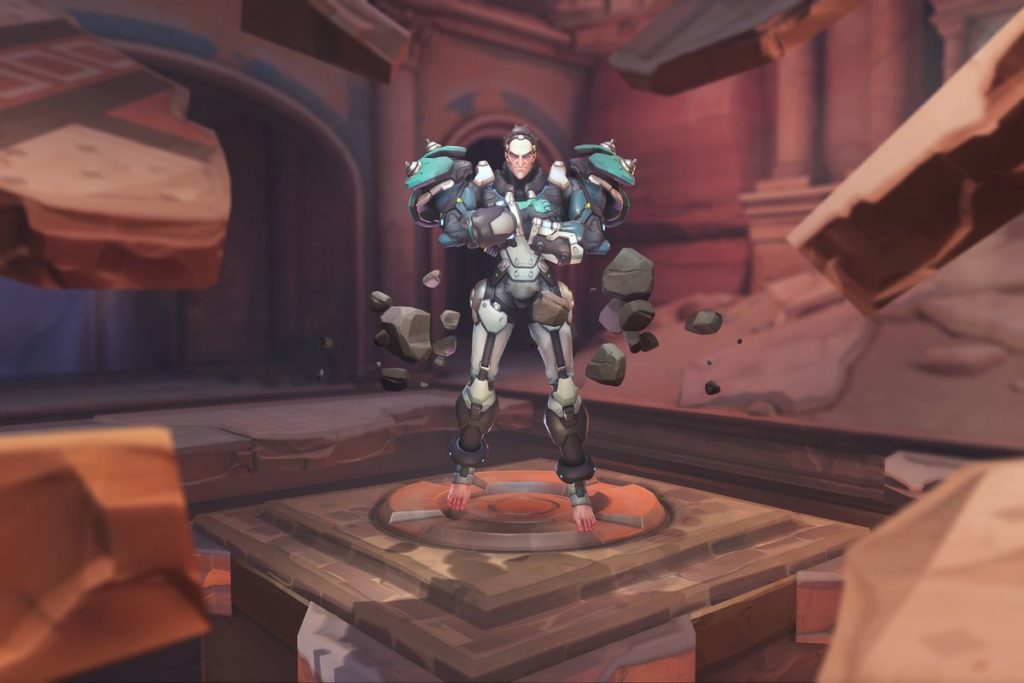
Overwatch recently released its latest hero, Sigma, characterized as having “severe psychological damage” and as being “dangerous to himself and others” because of his fractured mind. When asked about Sigma’s design aesthetic, one of the artists noted that his bare feet were due to the desire to, “…sell the ‘asylum’ look a bit more; in many institutions, patients are not allowed to have shoes because they might cause harm with the laces.”
While Overwatch has a track record of including characters with diverse identities, we have several concerns about the development of a character built around negative stereotypes of mental illness.
The first concern the inaccuracy of the representation of residential, psychiatric treatment facilities (we don’t generally use the word “asylum” anymore). The primary goal of psychiatric rehabilitation is to support individuals with serious mental health challenges to improve their mental health and psychiatric wellness. These goals are based on the foundation of treating the patients in their care, with care. As part of my doctoral training, I trained at several residential facilities over several years. While it’s true that some patients might have objects like shoelaces – or any other objects that present a risk of harm to self or others – might be taken away from them, that is not the experience of every patient. Even when shoelaces are taken away, I never saw a patient without shoes. They were always given either slippers or socks with grips on them, even if they were on suicide watch.
However, the factual errors are not the biggest problem with this character. Stigma is a major contributor to people refusing to seek treatment for their mental health problems. People are hesitant to seek help because they’re afraid what needing it might mean about them, as well as the treatment process itself. This is despite the fact that mental health challenges are incredibly common, with one in two people projected to be diagnosed in their lifetime and only about six percent of cases being severely debilitating. Despite this, there is no shortage of media representation of those with mental health challenges as irrevocably broken and often violent individuals. Arkham Asylum (Rocksteady Studios), the setting of the popular 2009 Batman action-adventure game, comes immediately to mind, but that’s not the only one by a long shot. The setting and characters of One Flew Over the Cuckoo’s Nest, the Best Picture Academy Award winner from 1976, is another prime example. Psychiatric hospitals are a common setting in horror games such as American McGee’s Alice (Rogue Entertainment) and its sequel Alice: Madness Returns. I frequently quote my friend and colleague Dr. Kelli Dunlap who says, “Has your character ever woken up in an asylum or psychiatric hospital and had something good happen to them? Probably not.”
On the topic of Sigma as an “unstable” and violent individual, this hits another stereotype regarding those with mental illness: the mentally ill as violent. This is another gross overgeneralization that has no shortage of media depictions: the Joker from Batman, Legion, Kefka from Final Fantasy 6, Jigsaw from the SAW series’ of movies, and Norman Bates from Psycho are all examples. Even Sherlock Holmes’ rival Professor Moriarty was described as “insane” in one book. But the idea that all mentally ill individuals are violent is not a scientifically supported contention. Psychiatric diagnoses aren’t nearly the contributors to violence that the general public seems to think, and substance abuse appears to be a much more significant contributor to violence. The common wisdom is that those with mental health diagnoses are more likely to be the victims of violence than the perpetrators. Still, in Sigma, we have another fictional character who links the idea of mental illness and violence.
If this were a single, isolated character, that would be one thing, but it’s another in a long line of stereotyped characters which reinforce outdated images of mental illness and associated behaviors. Given some of the feedback that many on the internet are giving on this character, we hope that the designers will take that to heart and offer some changes which do not reinforce these overdone, stigmatizing tropes.
